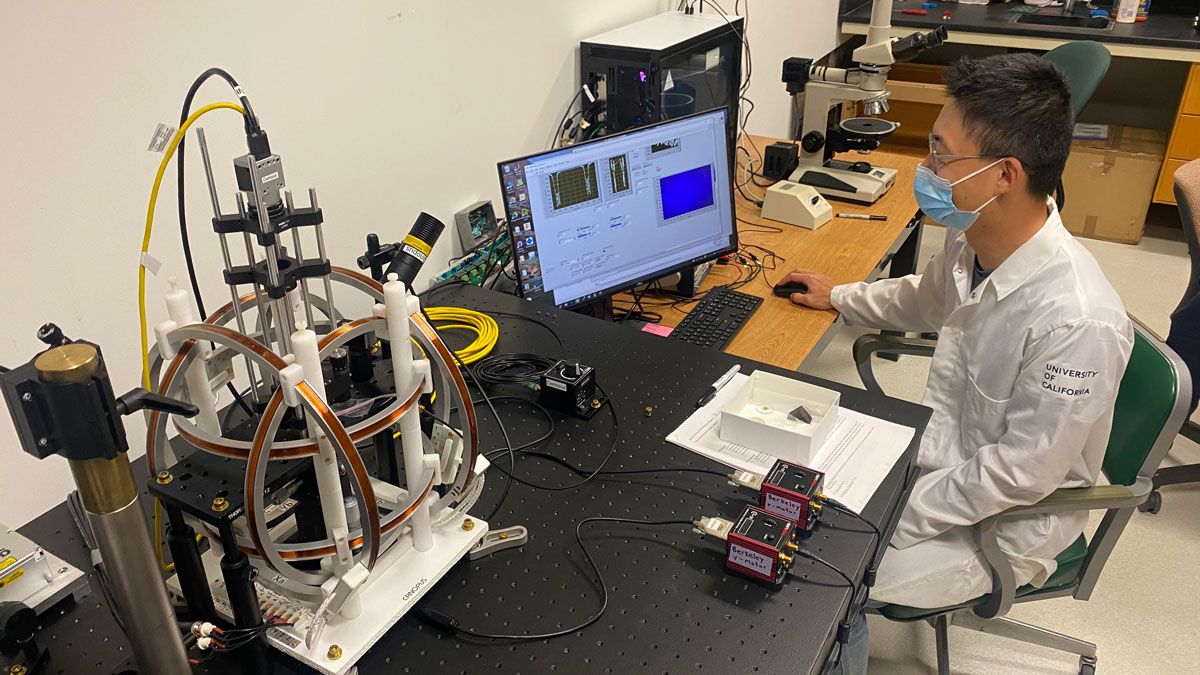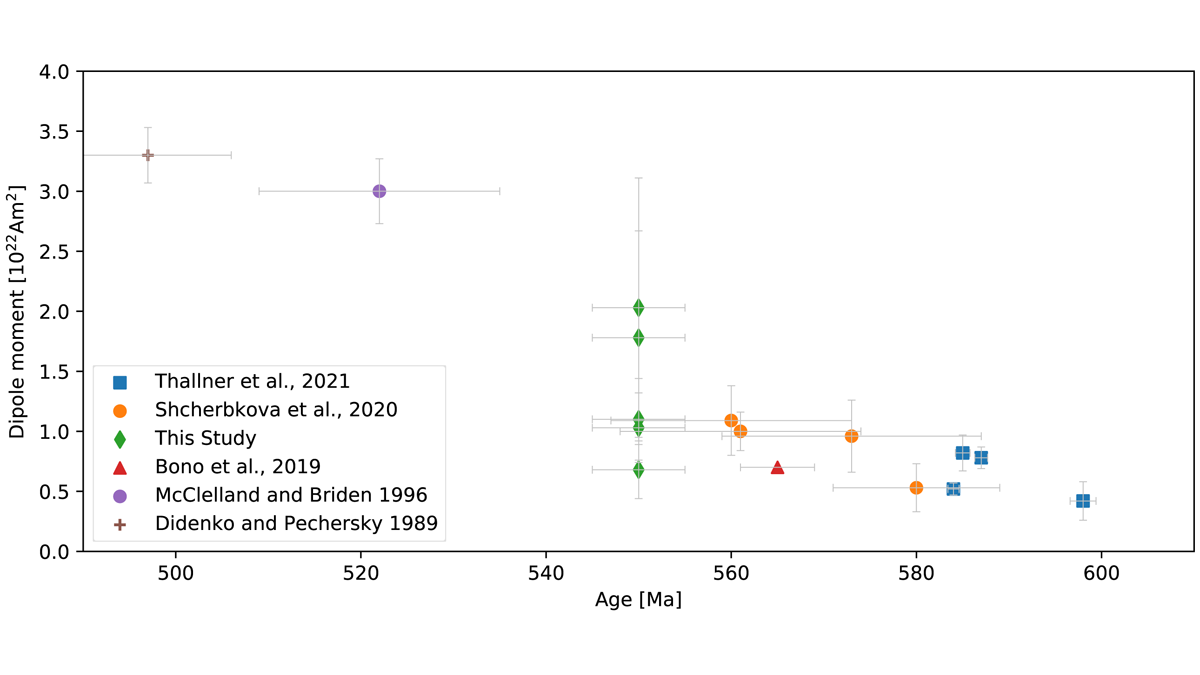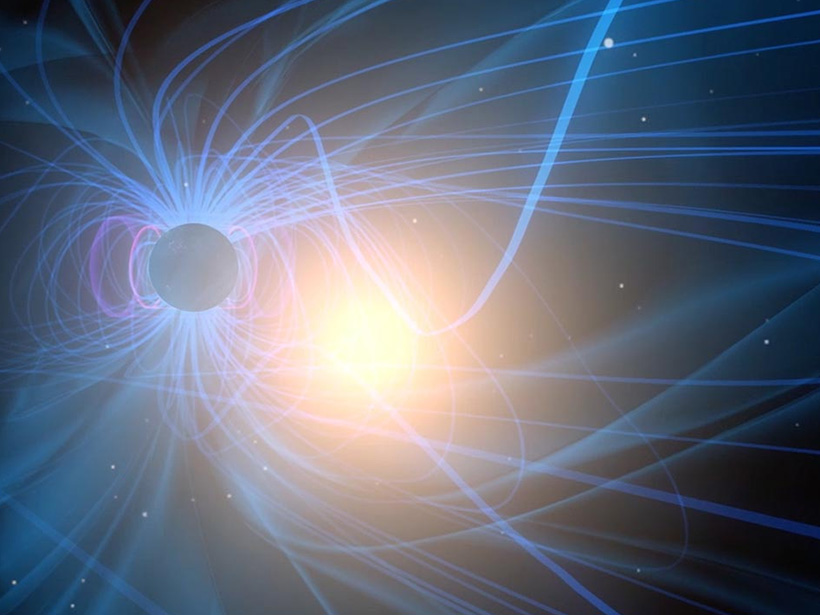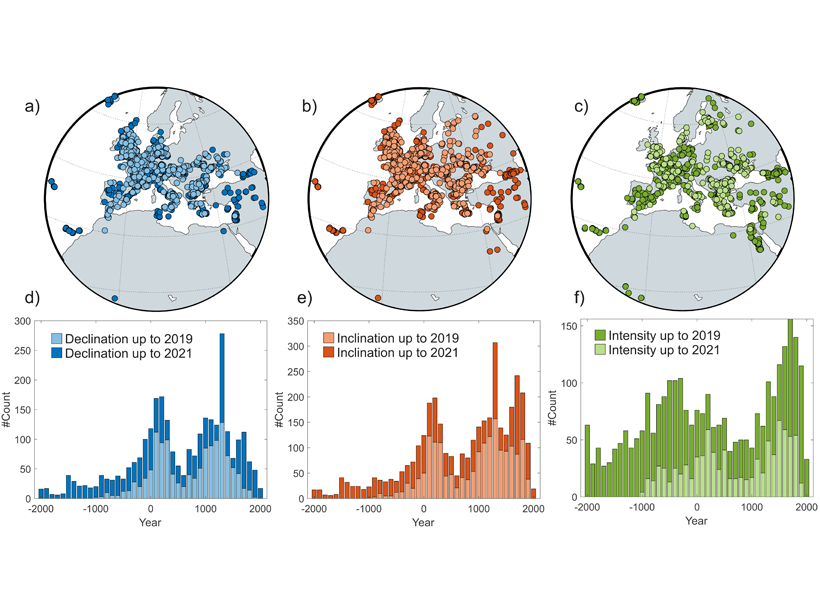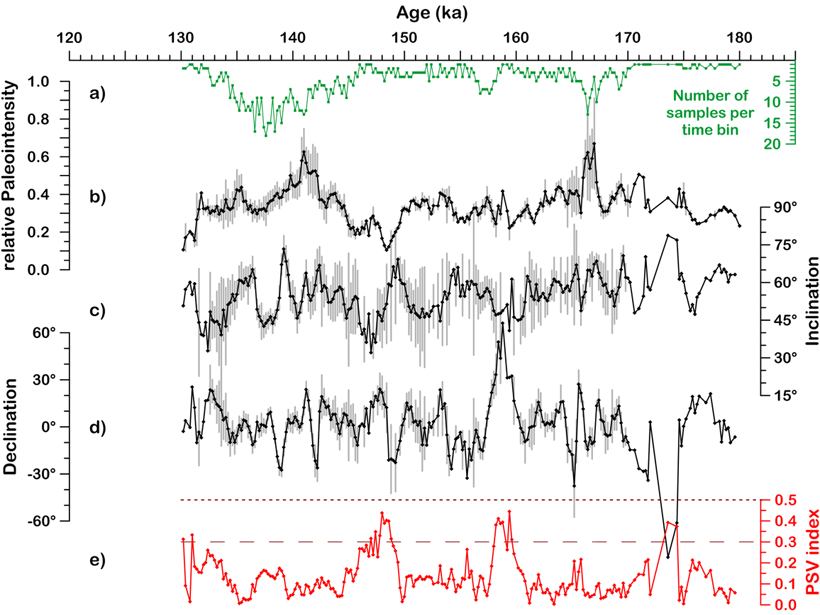The geomagnetic field changes regionally on centennial time scales. A recent study unlocks three historical archives from the “Four Corners” region (southwest USA) reconciling previous discrepancies.
magnetic fields & magnetism
Diamonds Are a Paleomagnetist’s Best Friend
Typical paleomagnetic measurements average a sample’s signal. The quantum diamond microscope helps scientists make micrometer-scale maps of magnetism, showing where a sample locked in its magnetic signatures.
A Dipole Field from the Ediacaran-Cambrian Transition Onward?
The Ediacaran features an instable magnetic field complicating paleogeographic reconstructions; a new paleointensity study on late Ediacaran rocks indicates a weak but stable dipolar field.
Ancient Flint Tools Reveal Earth’s Changing Magnetic Field
Stone tools may provide data on paleomagnetism that are out of reach for other markers, such as prehistoric pottery.
Hidden Atmospheric Particles Sculpt Near-Earth Space Environment
Charged particles escape our atmosphere following Earth’s magnetic field and constitute a main source of matter that modulates Sun-Earth interactions.
Magnetic Record of Early Nebular Dynamics
Magnetized particles in a meteorite suggest strong magnetic fields in the early solar nebula.
Realizing Machine Learning’s Promise in Geoscience Remote Sensing
Machine learning and signal processing methods offer significant benefits to the geosciences, but realizing this potential will require closer engagement among different research communities.
Scientists Mine 16th Century Ship Logs for Geophysical Research
Compass measurements held a key to unlocking the mystery of Earth’s magnetic field and its changes over time. A historian-turned-geoscientist found the measurements in an unlikely place—merchant ship logs.
New Spherical Cap Field Model for Europe and Direct Environs
New data on ancient burnt structures is integrated into a superior spherical cap field model for Europe.
Marine Isotope Stage 6: First High-Resolution Field Record
A 200-year resolution record from the Black Sea for marine isotope stage 6 (130-180 ka) shows a stable geomagnetic field.


